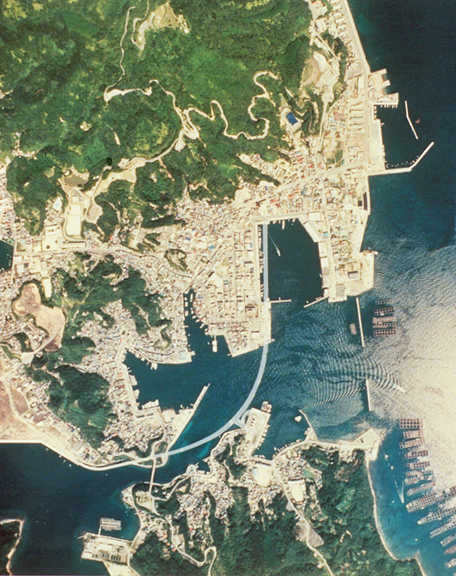
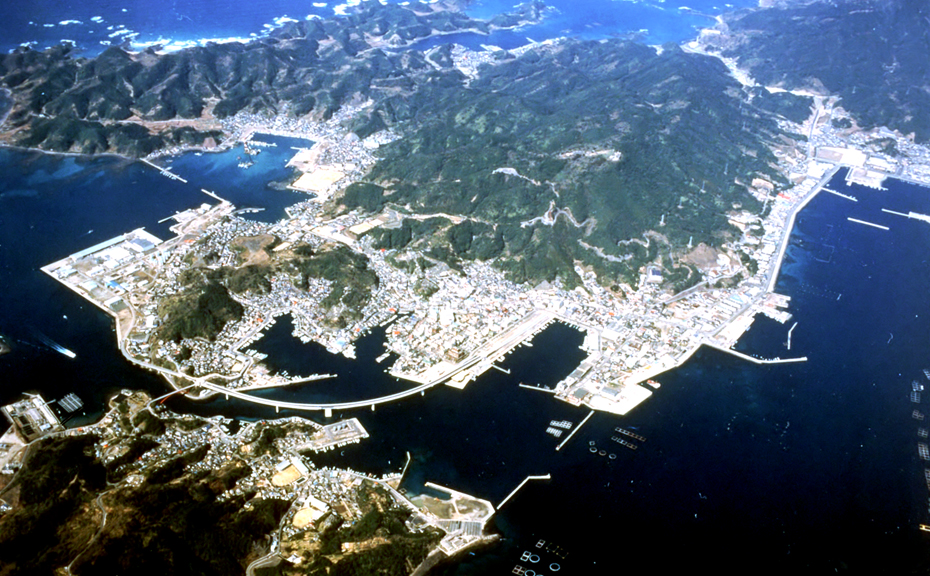
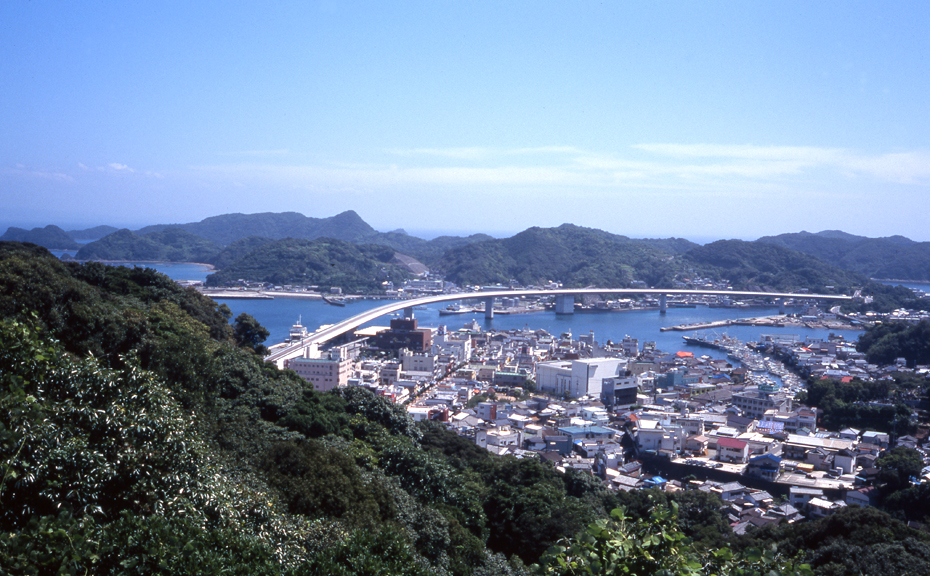
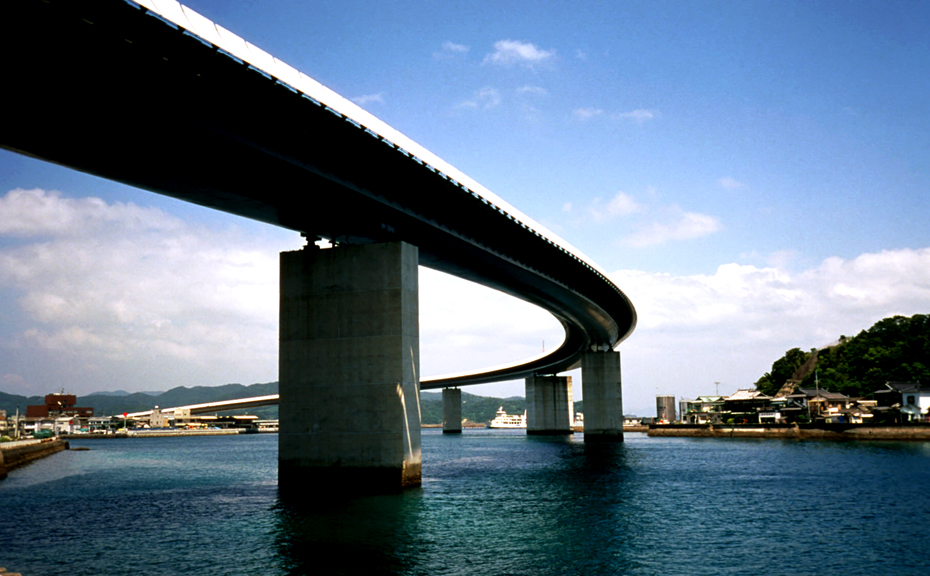
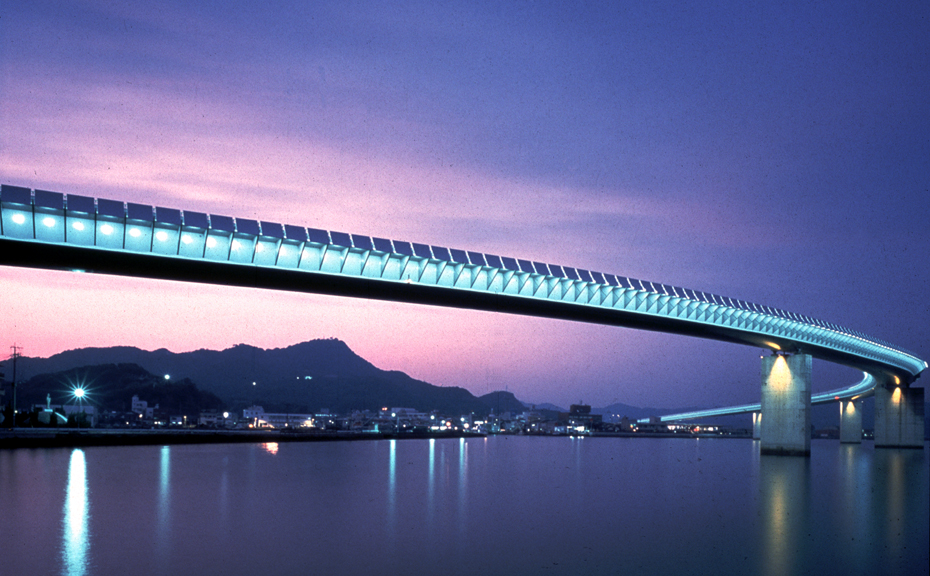
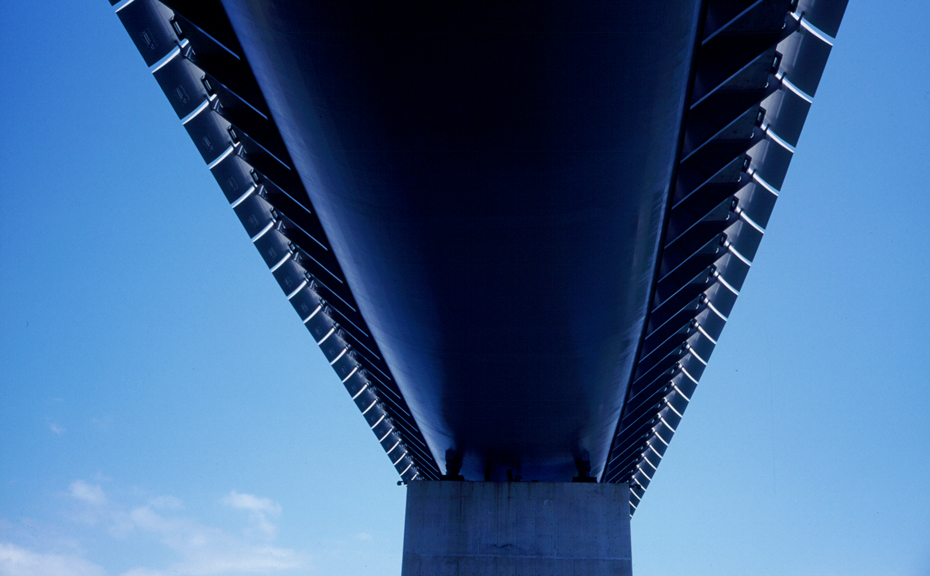
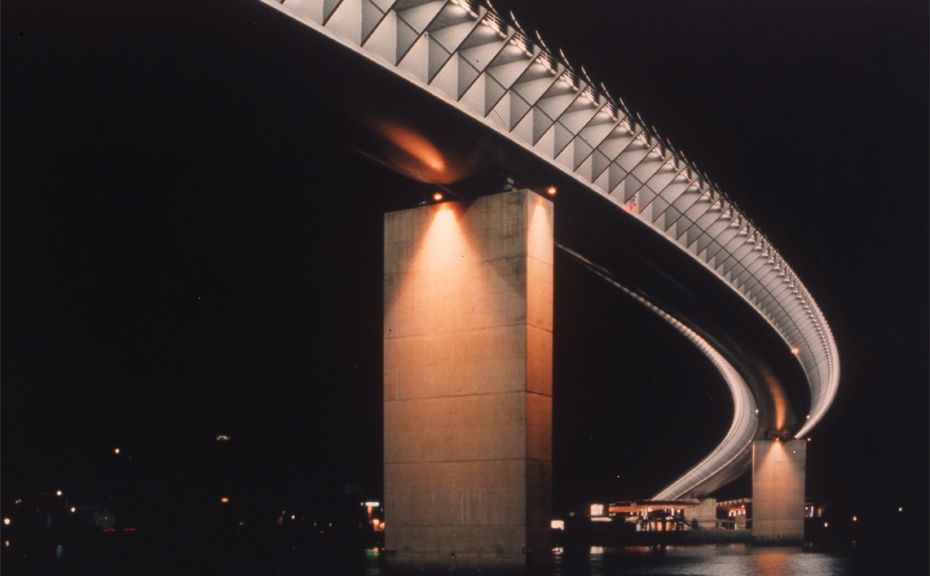
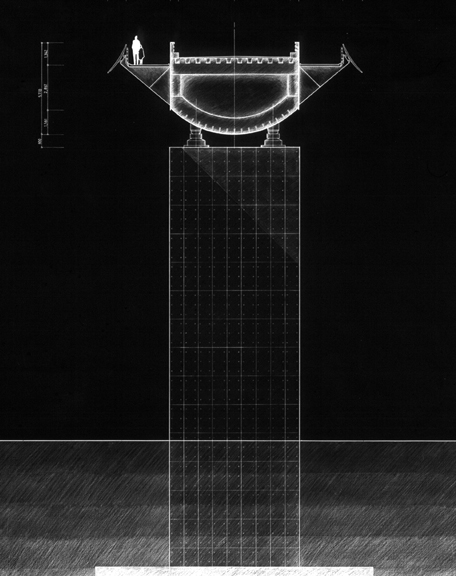
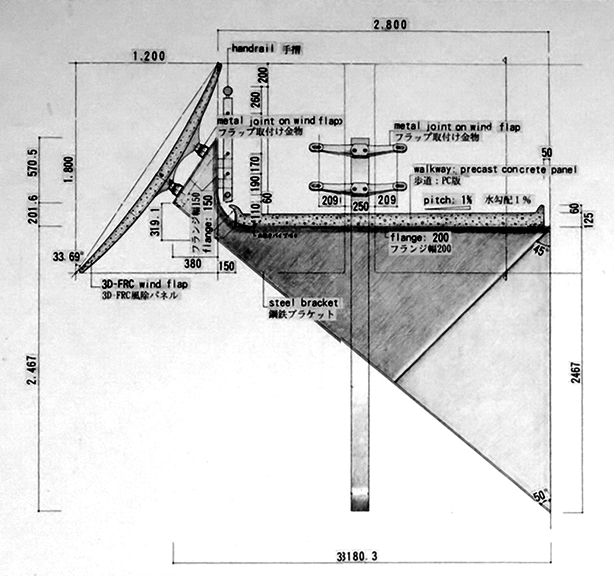
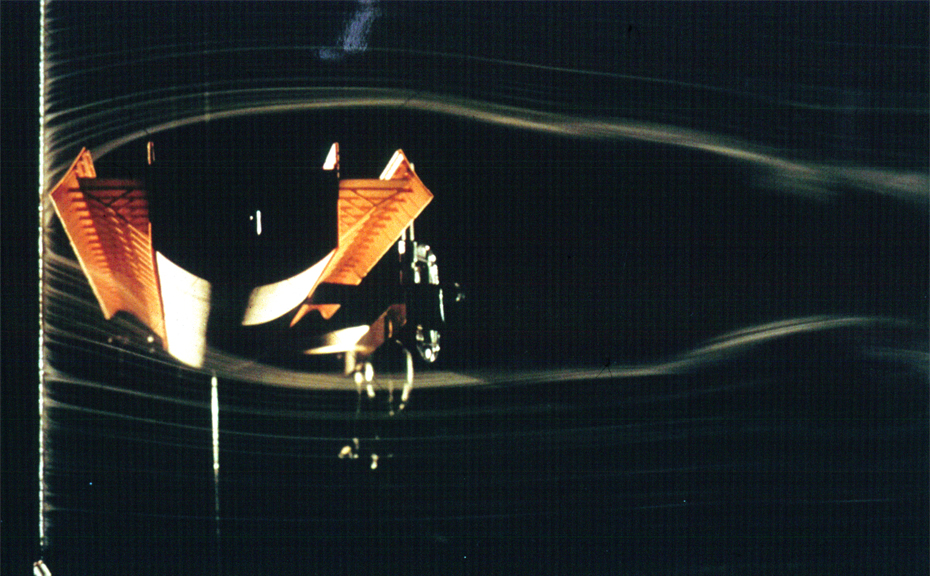
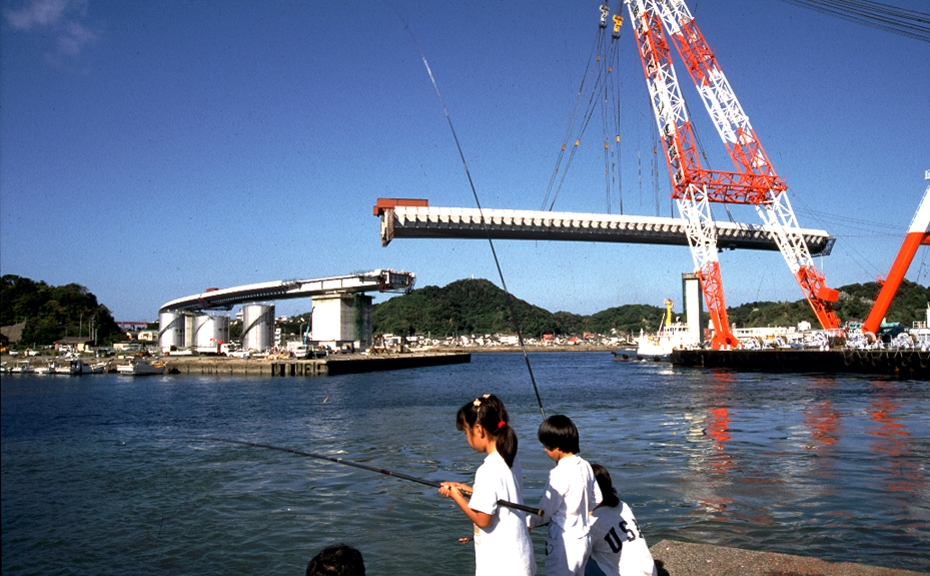
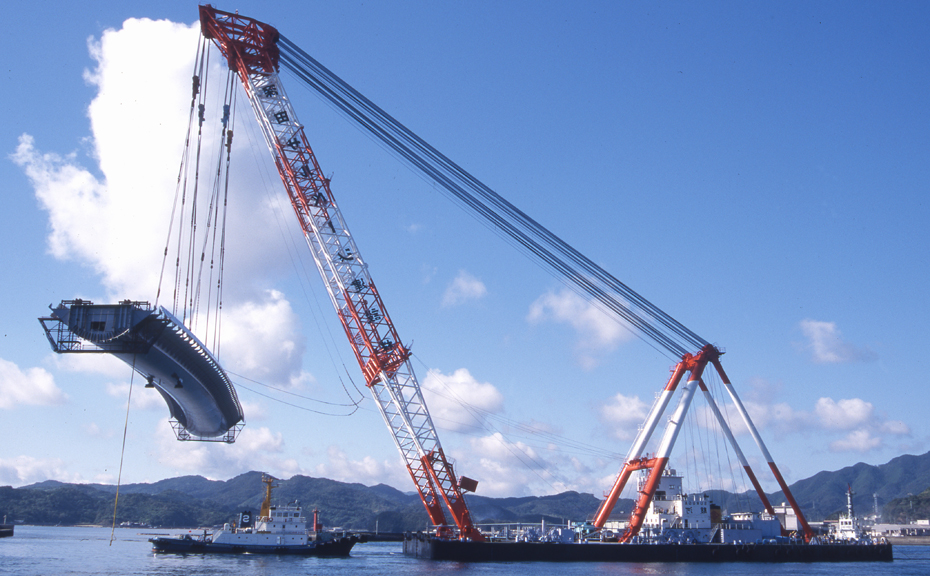
Ushibuka-city, located on the southern tip of the Amakusa Peninsula in Kyushu, is known as a midsize fishing port surrounded by the beautiful natural scenery of a national park. A connecting bridge was planned for the purpose of extending a national road running through the center of the port into the southern district on the opposite bank of the bay. The road was to be extended further to the southwest, so as to connect these districts smoothly. To prevent the bay’s delicate sense of scale from being damaged, the bridge design follows a careful obedience to the natural scenery, and it has a delicate outline, like a single curved stroke floating on the bay.
To avoid projection of the bridge structure, a design using continuous girders of about 150m in length between support columns was adopted. The girders are supported at a height of 19m above water level, and their curved undersides create a sense of lightness as if they were separated from the support columns. At both sides of the bridge, an organically shaped windbreak protects pedestrians from wind, while the bridge’s round-shaped bottom suppresses the turbulent air around the bridge. The light reflecting from the windbreak and the shadow falling on the girders create a delicate rhythm on the face of the 883m long bridge.
– a Bridge in a Landscape –
Type
Bridge, Kumamoto Artpolis Project
Location
Ushibuka, Kumamoto, Japan
Client
Kumamoto Prefecture
Status
1997 Completion
Length
883m
Design
Renzo Piano Building Workshop Japan (Renzo Piano + Noriaki Okabe), Ove Arup & Partners (Peter Rice) + Maeda Engineering Co. (Seiichi Ito)
Construction Supervision
Kumamoto Prefecture
Awards
*1998 Tanaka Prize of the Japan Civil Engineering Academy
*1998 Japan Lighting Award
*1999 Kumamoto Landscape Prize for Ushibuka Bridge
*2001 Design Selection 2001 The Landscape & Design Prize, the Japan Society of Civil Engineers
Reference
*Nikkei Construction, 7-12, 1996, Nikkei BP Co., Ltd., Japan
*Zoukei No. 2, 96-4, Kenchikushiryou-kenkyu-sha, Japan
*Shinkenchiku: 1997 11, Shinkenchiku-sha, Japan
*Space Design No. 316, January, 1991, Kajima Institute Publishing Co., Ltd., Japan
etc…
*RENZO PIANO BUILDING WORKSHOP complete works volume four, PHAIDON, ISBN: 0-7148-3931-0
*GA JAPAN 29, A.D.A. EDITA Tokyo, Japan, ISBN: 4-87140-828-0 C1352
*GA ARCHITECT 14 RENZO PIANO BUILDING WORKSHOP, A.D.A. EDITA Tokyo, Japan, ISBN: 4-87140-421-8 C1352
Photograph
Maeda Engineering Co.













